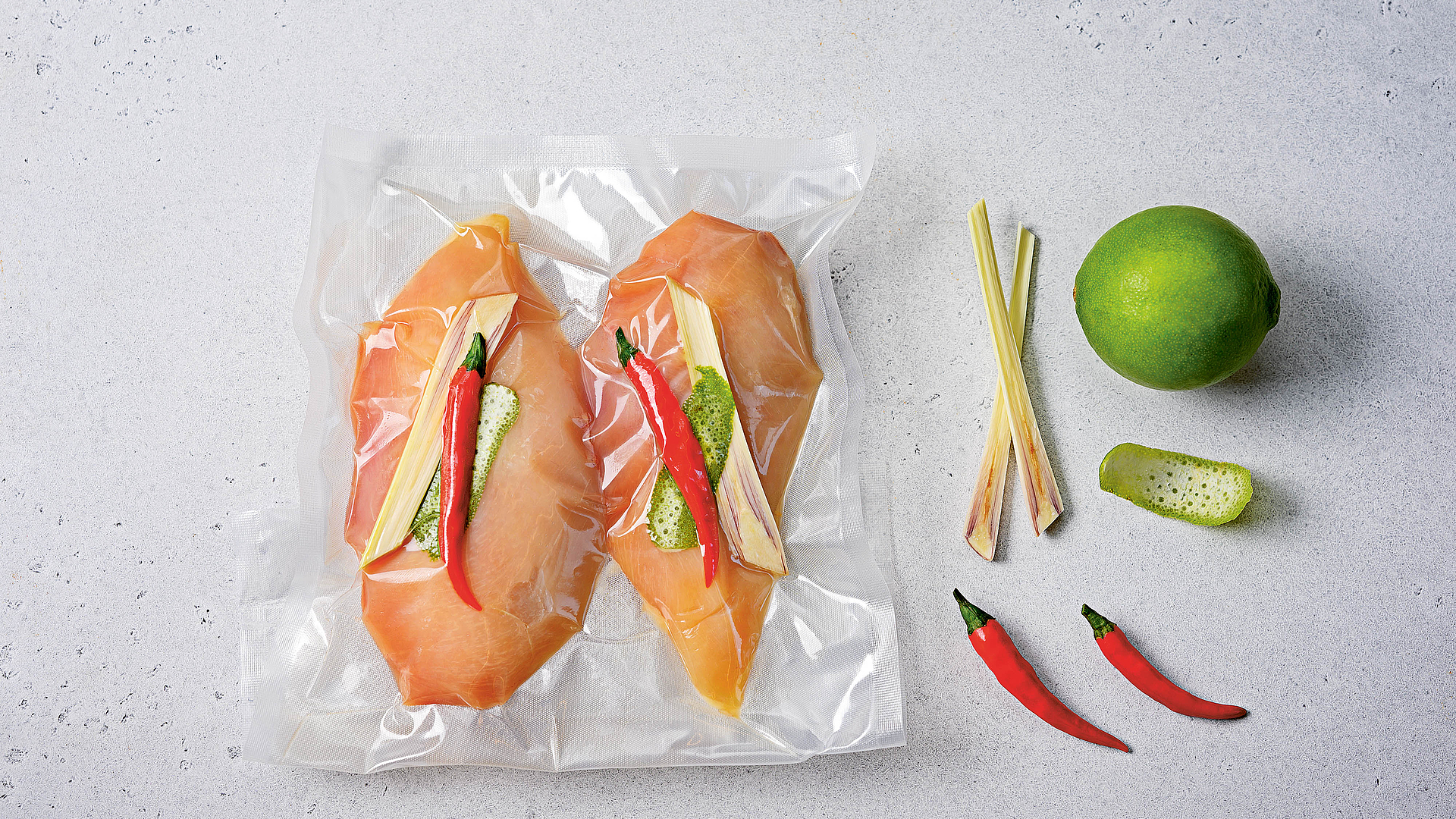
Gentle and aromatic: sous-vide cooking
Effortlessly hit that perfect degree of doneness without fail in a sous-vide cooker. By vacuum-sealing food and subsequently cooking it in a water bath, you can achieve professional results with little to no effort. How? Read on to find out.
VACUUM-SEALED COOKING – THAT’S HOW IT’S DONE
“Sous vide” – if that sounds like French to you, that’s because it is. It essentially means “under vacuum” and describes a method of preparation in which mainly meat – but vegetables and rice as well – is firstly vacuum-sealed in a bag and cooked at low, constant temperatures (up to 95°C) in a water bath or hot steam.
What you need for this is a sous-vide cooker and a vacuum sealer. But not to worry, as there are alternatives. This kind of cooking can be done using our all-rounder, the X BO. Pre-heat and set the required cooking time and temperature via the special ‘sous-vide cooking’ programme. Once the desired temperature has been reached, place the sous-vide bags on the oven rack. They’ll then be cooked in hot steam.
And if you don’t have a vacuum sealer, you can simply use a zip-seal food bag. Fill the food to be cooked into the bag and close it. Leave a small opening and lower the bag into some water with the opening pointing upwards until the water line reaches the zip and the air is forced out of the bag. Then close the remaining opening as well – your sous-vide bag is now done.
IDEAL WHEN ENTERTAINING
Once these preparations have been made and the cooking device has been brought to temperature, then the hard part is already over. Your sous-vide cooker will take care of the rest, which is why this method of cooking is particularly handy when you’re expecting guests. Simply relax with your guests while your food cooks.
But please be aware: Due to the lower temperatures used in sous-vide cooking, you’ll need to be a bit more patient than with pan frying. In the end you’ll get to enjoy a particularly flavourful experience. As sous-vide cooking is a very gentle method of preparation, not only do meat, fish, vegetables and fruit all largely preserve their aromas, flavours and nutrients but the finished results are extremely tender and juicy.
So you can also season sparingly when cooking sous-vide. Herbs like rosemary, sage and thyme are best placed in the vacuum bag so that the food takes on the flavour directly. Salt and pepper, on the other hand, should only be added after cooking, especially in the case of meat. To release even more flavour, you can also briefly fry meat, vegetables, etc. after they’ve been in the water bath.
IT ALL COMES DOWN TO THE RIGHT TEMPERATURE
The key to a pink steak or a crisp carrot from the sous-vide cooker is the right core temperature. Here you’ll find an overview:
- Meat should reach a core temperature of between 50 and 70°C depending the degree of doneness desired (rare – medium – well done) and the type of meat. In most cases, several hours are needed.
- Vegetables need to be cooked at approximately 85°C. Cooking times vary depending on the type of vegetable. For example, it’s 50 minutes for carrots and three hours for whole potatoes.
- If you want to cook rice sous-vide, place it into the bag along with some water, butter and salt and cook at 90°C for 35 minutes.
- Fruit as well as desserts such as crème brûlée can be prepared in a sous-vide cooker – at 83°C for around an hour.
So you can conjure up entire menus in the water bath and enjoy tasty, healthy meals. Using the right equipment and the corresponding cooking temperature and time, nothing can go wrong.